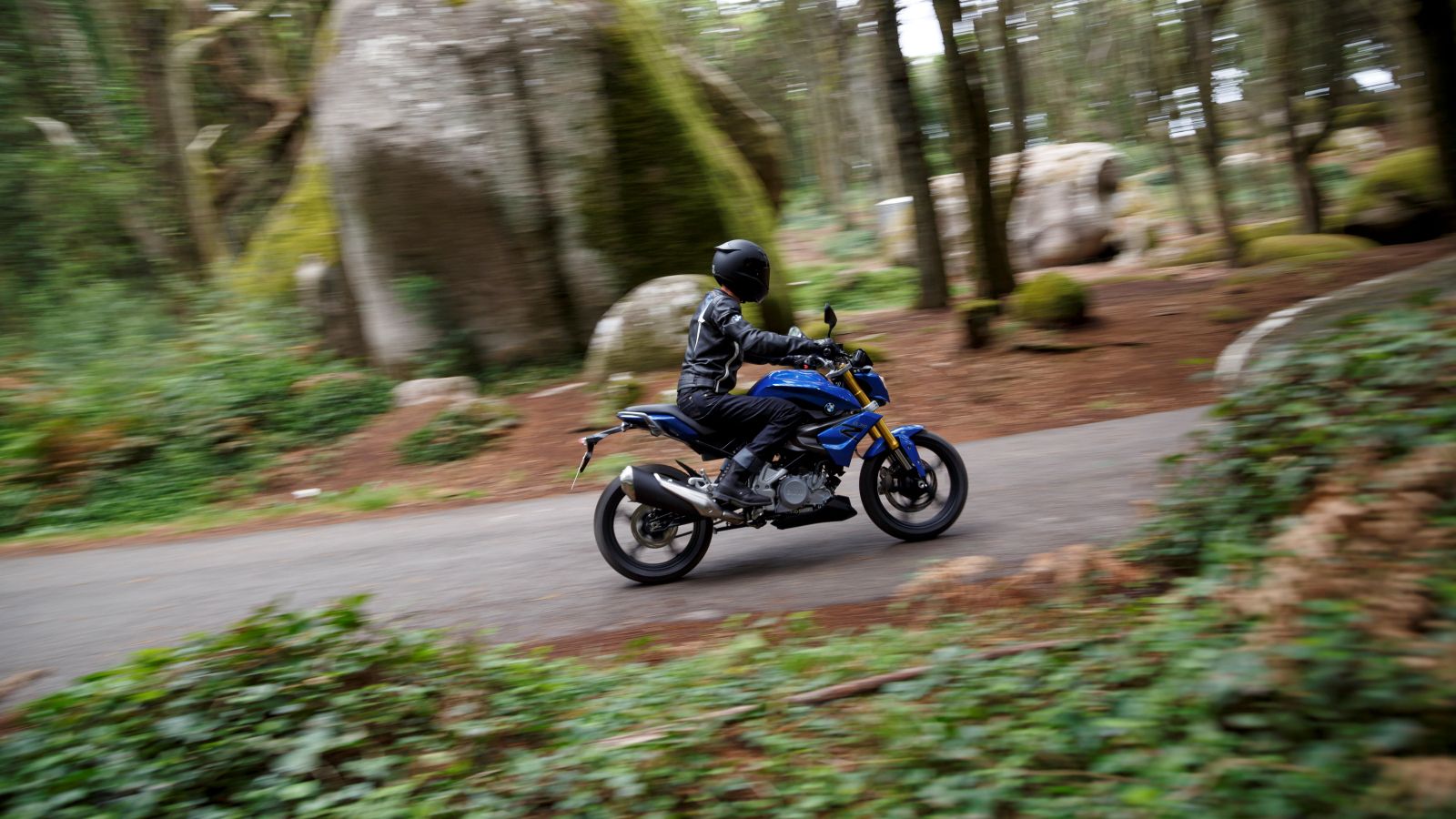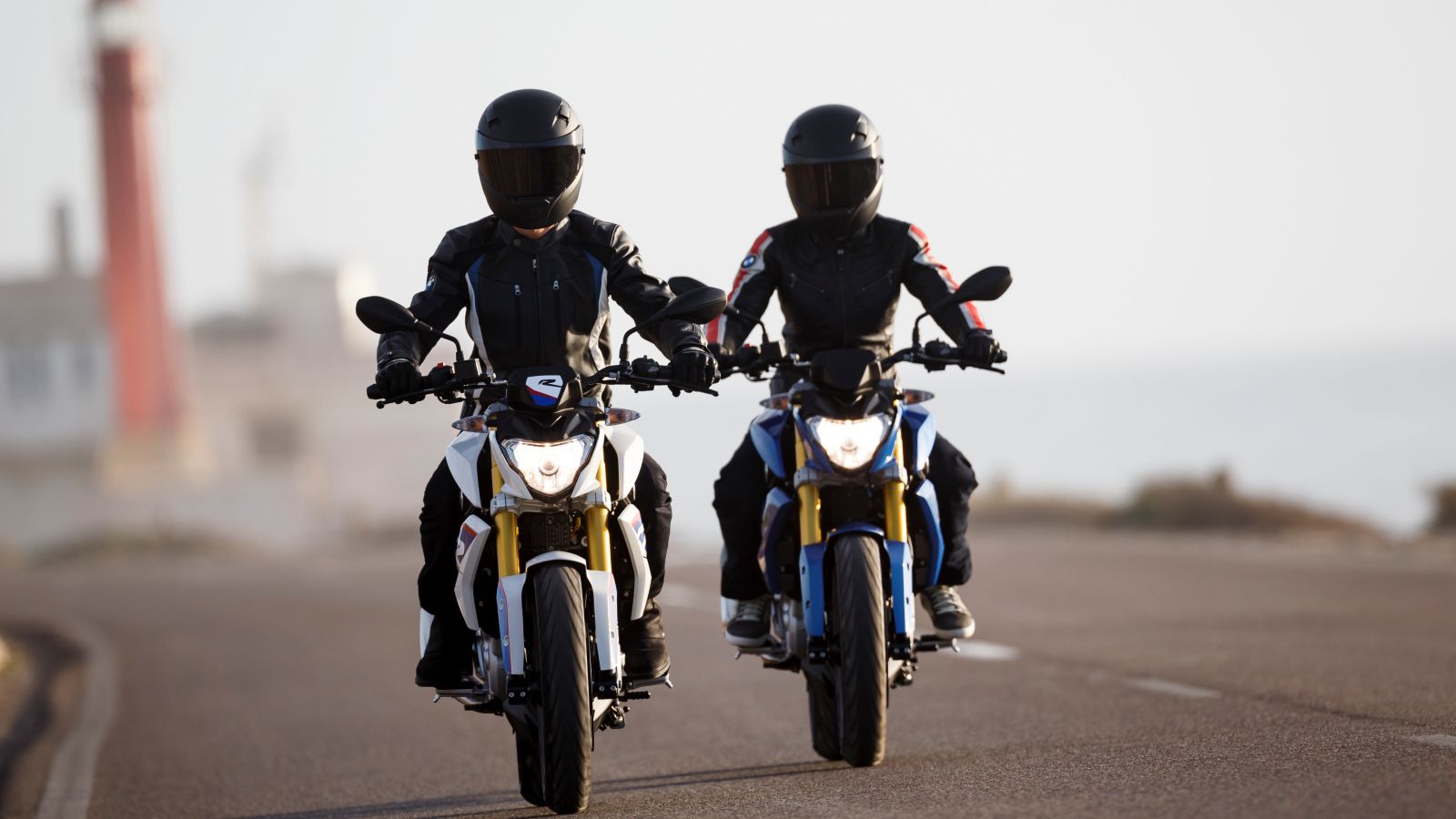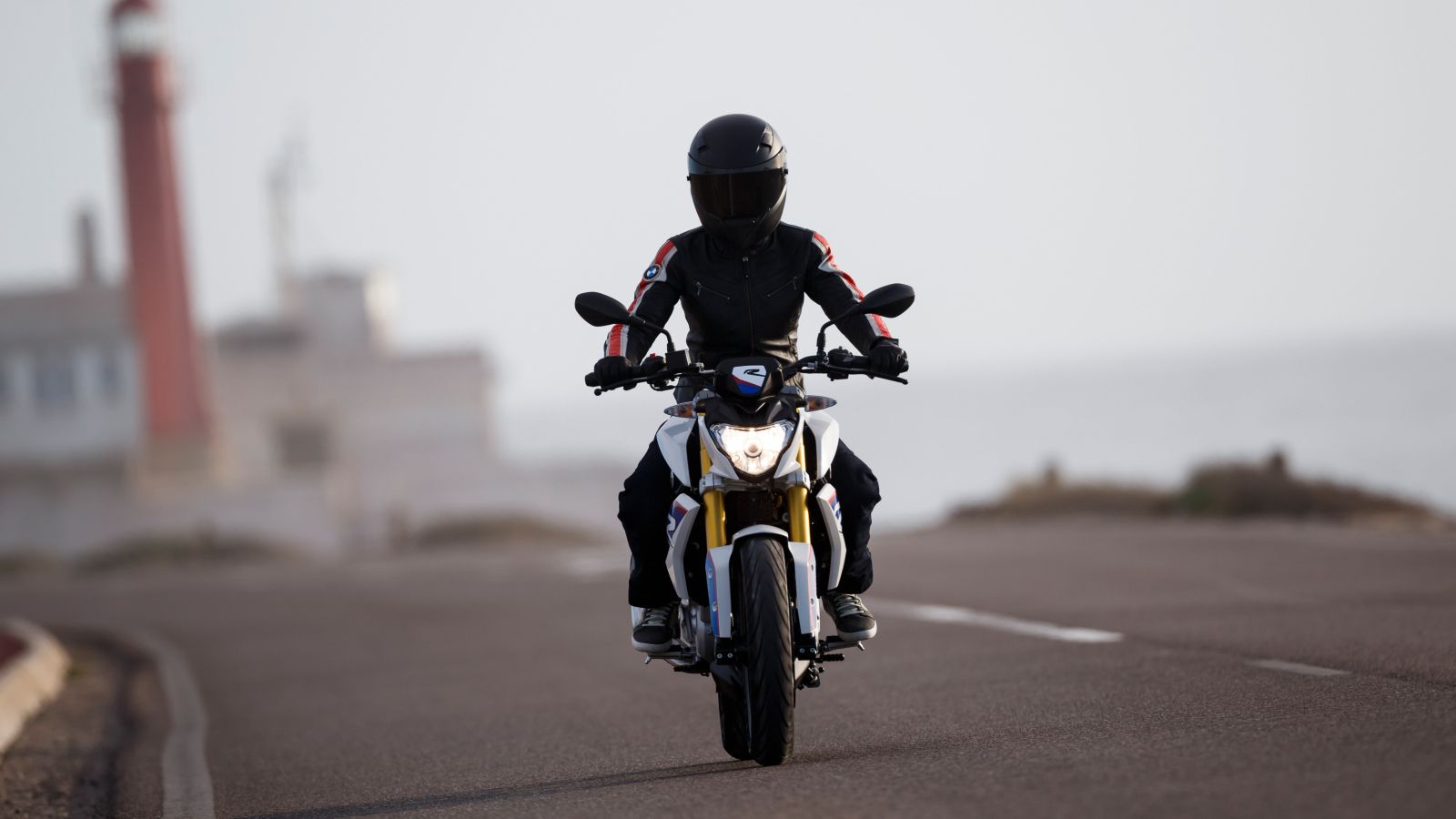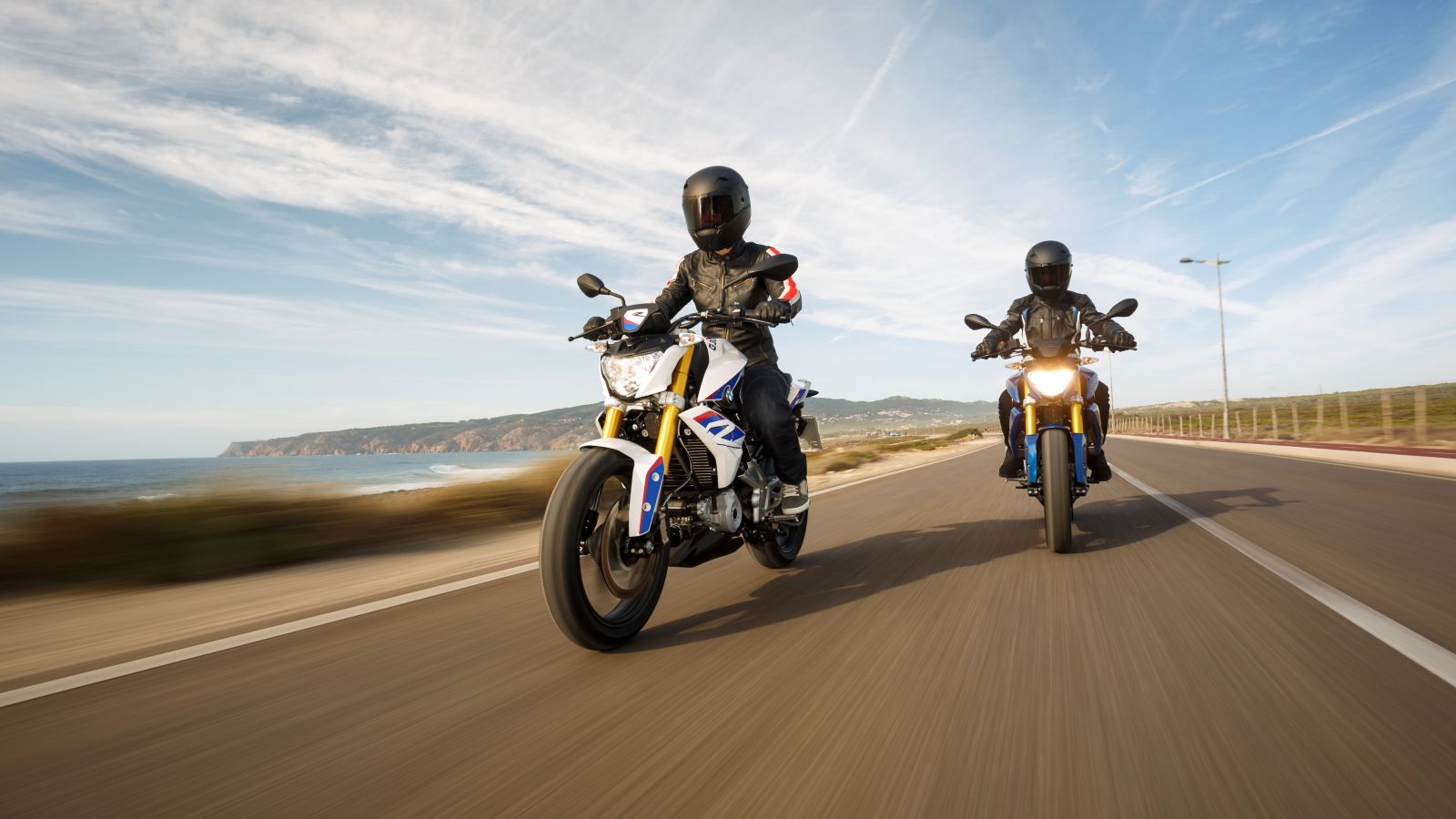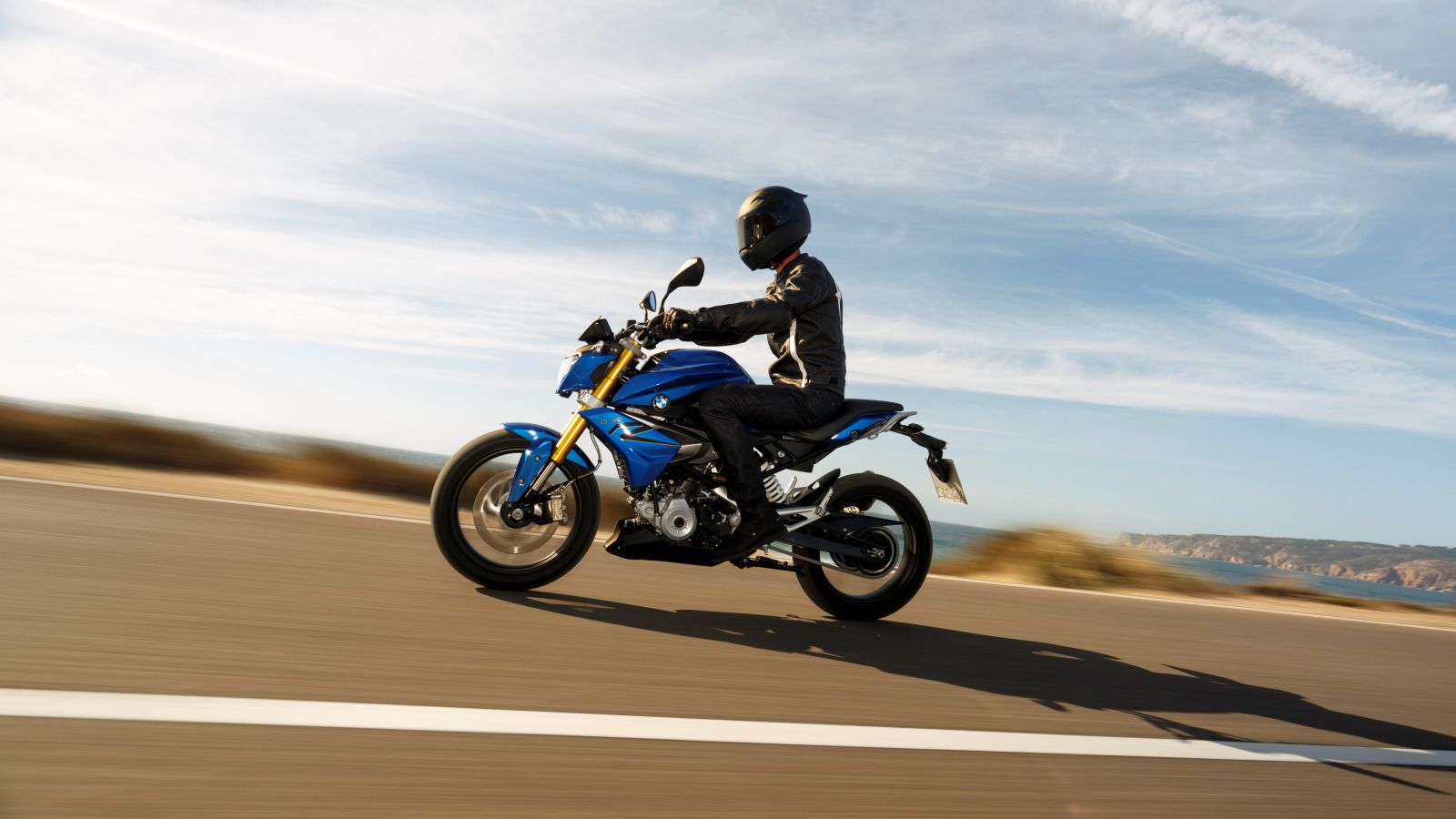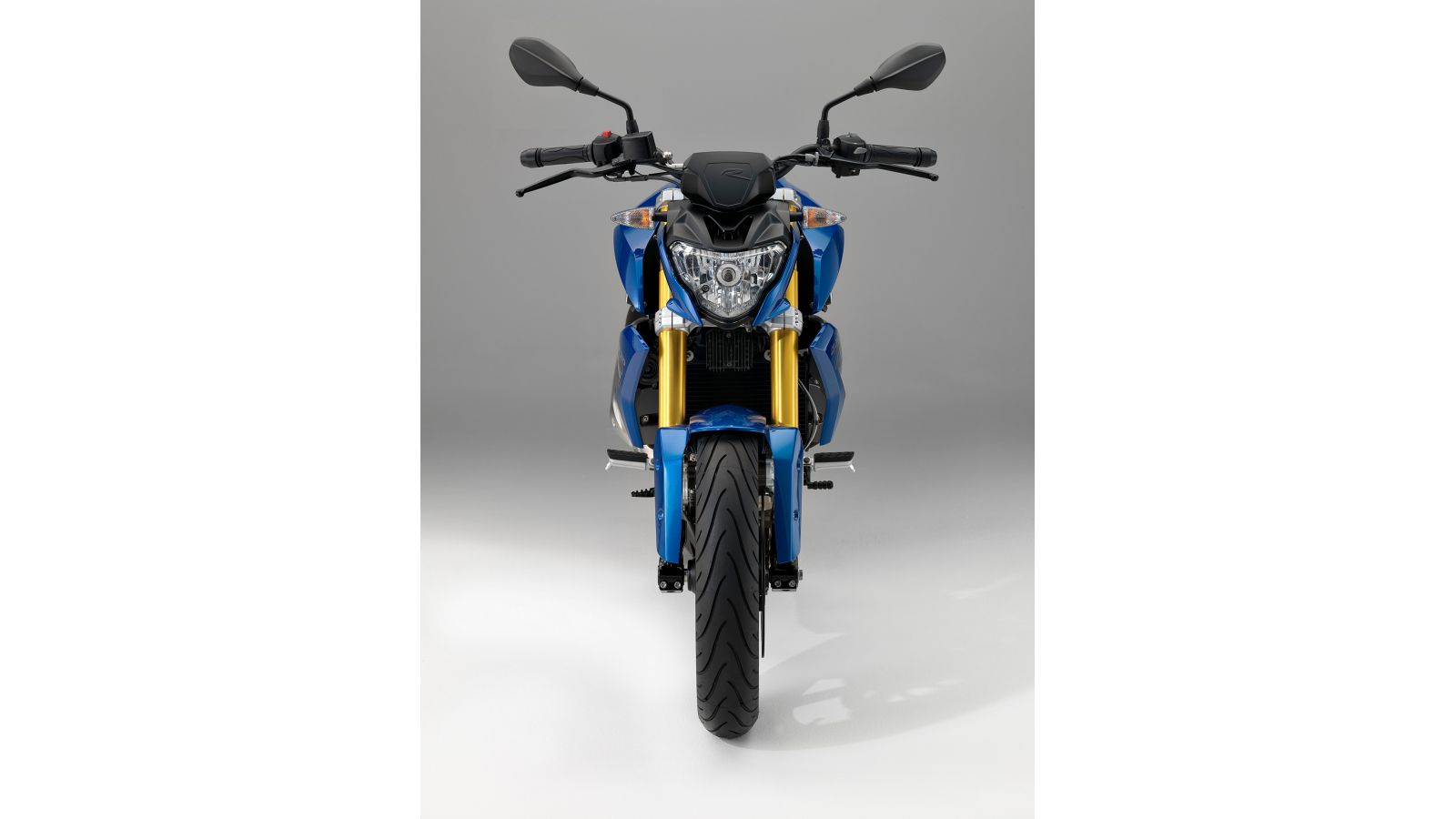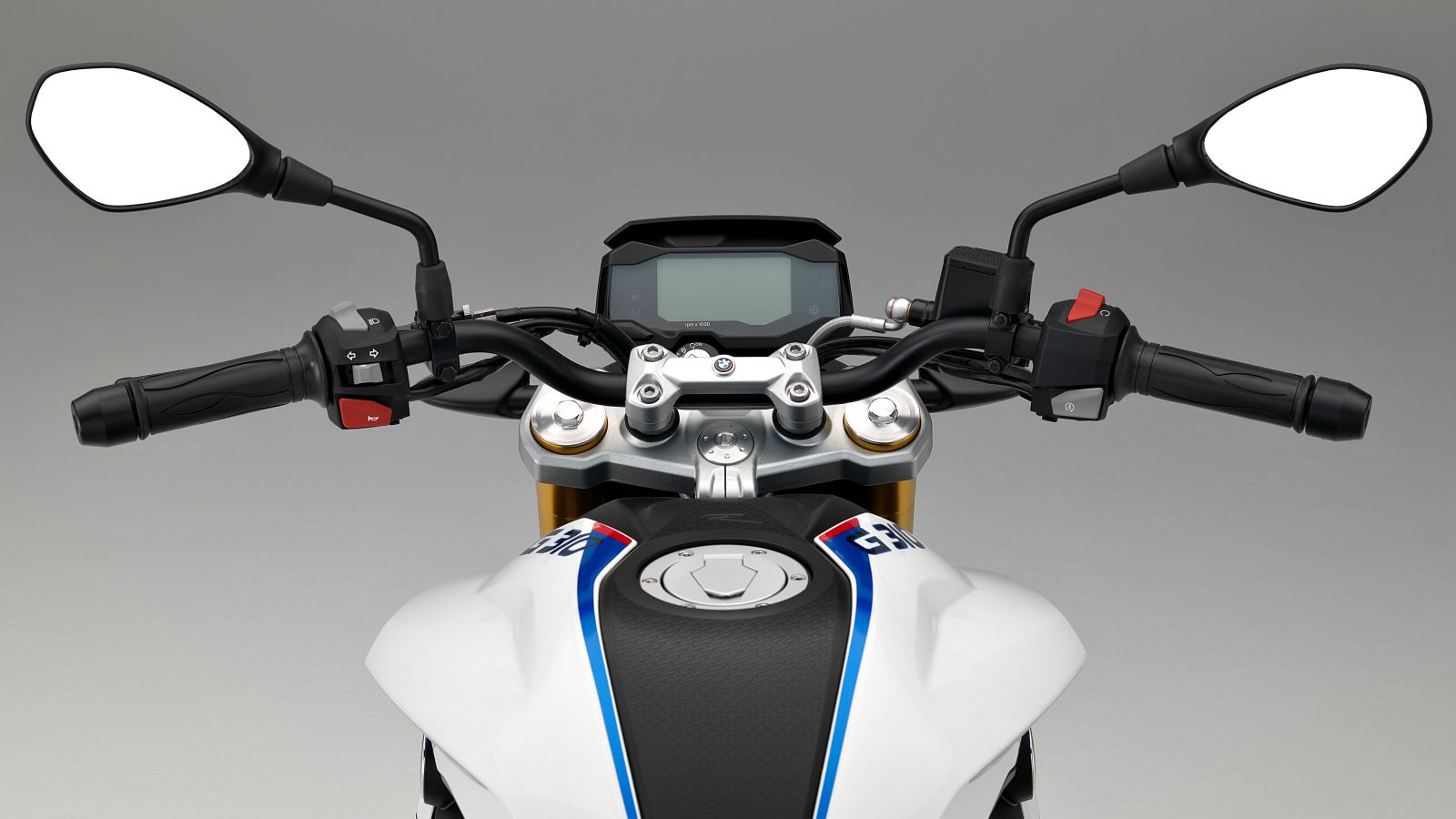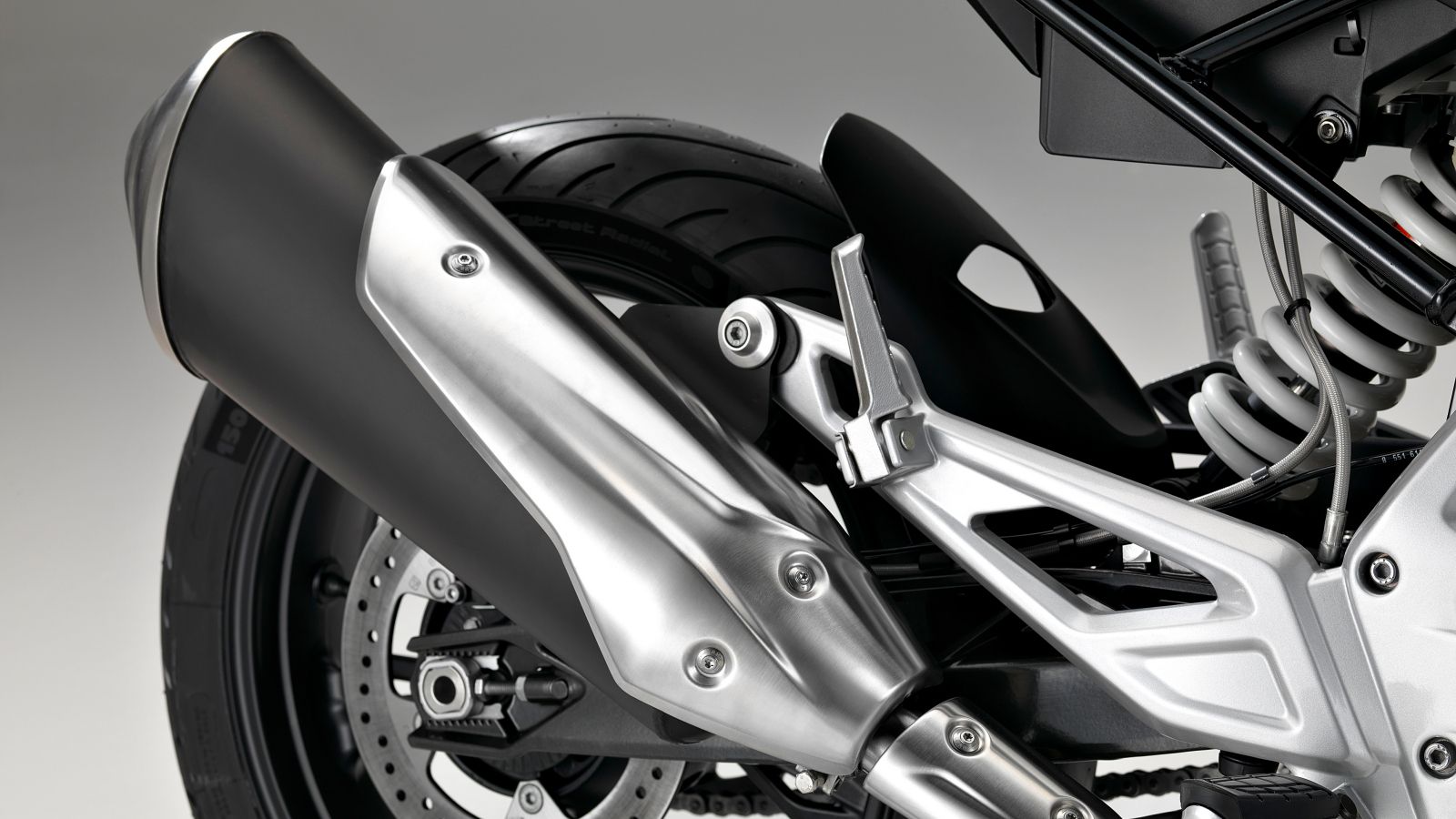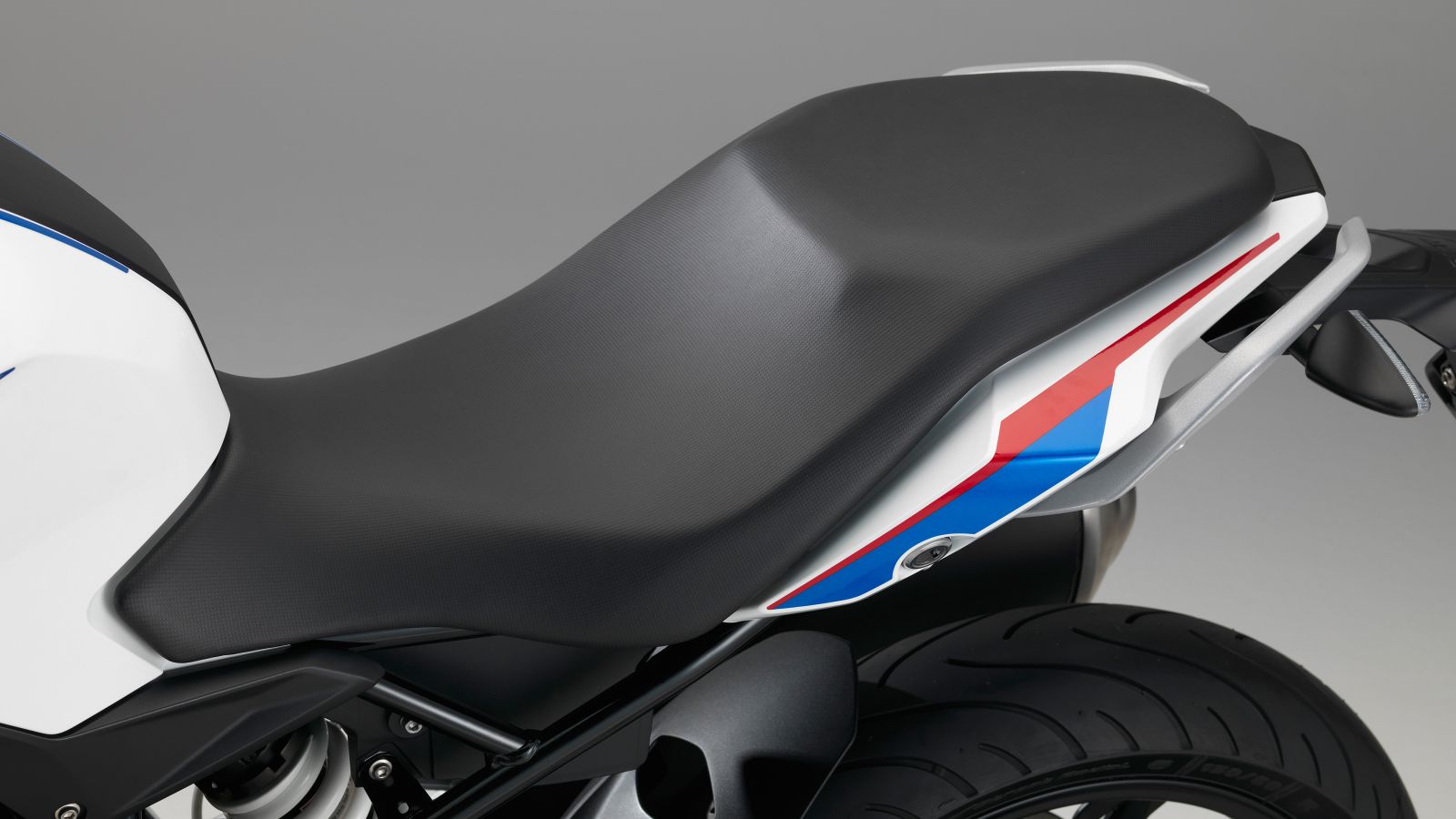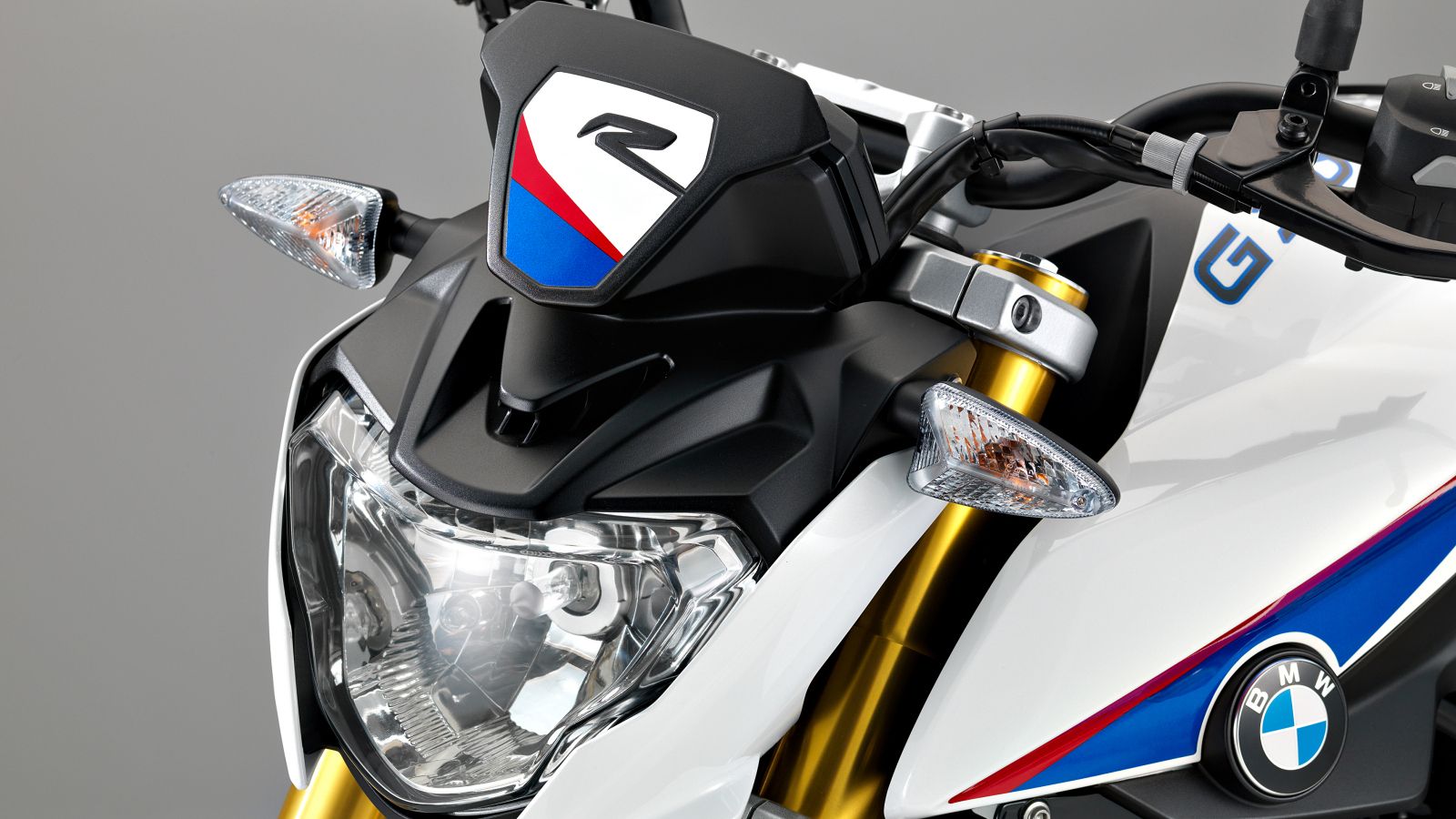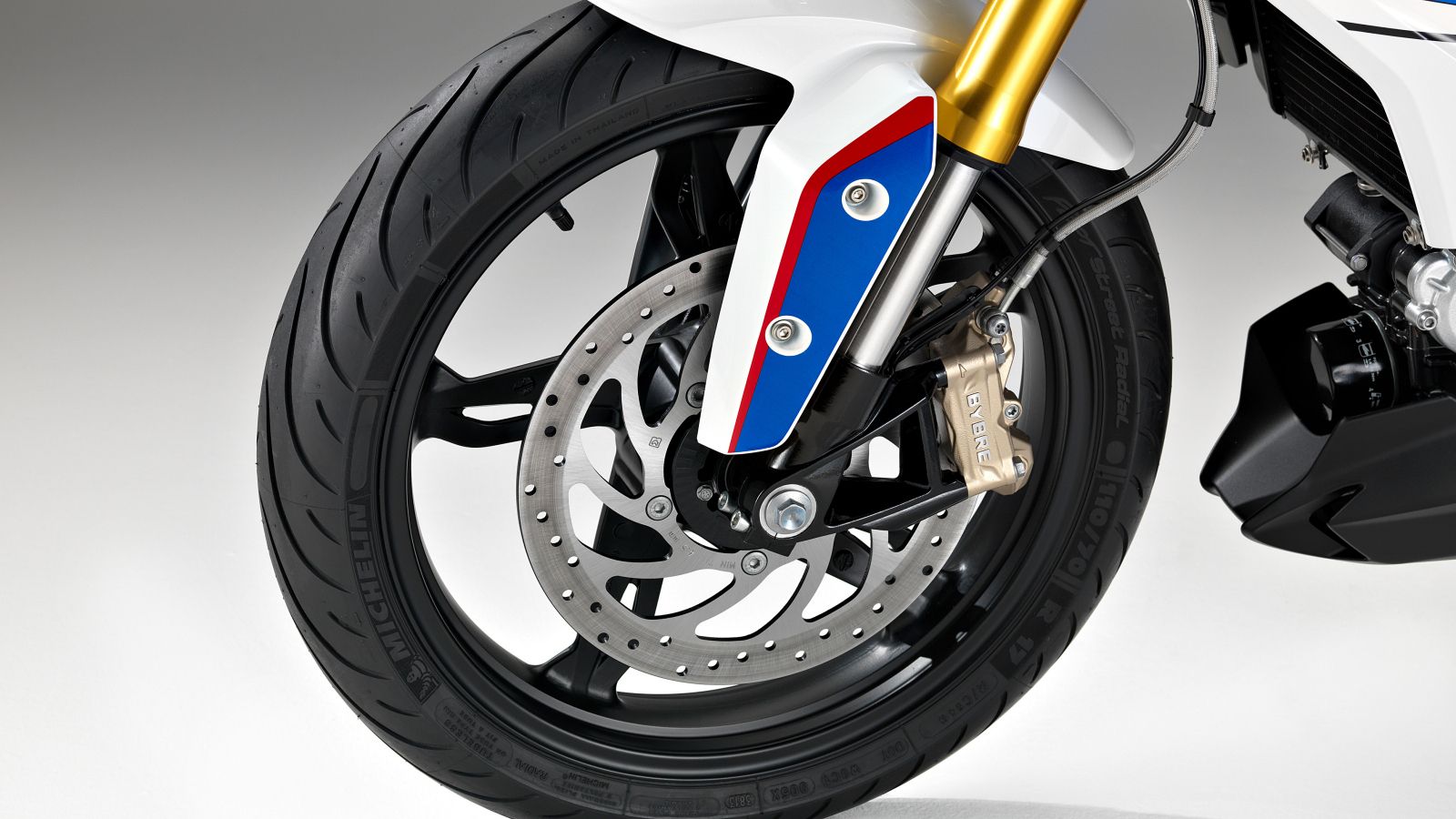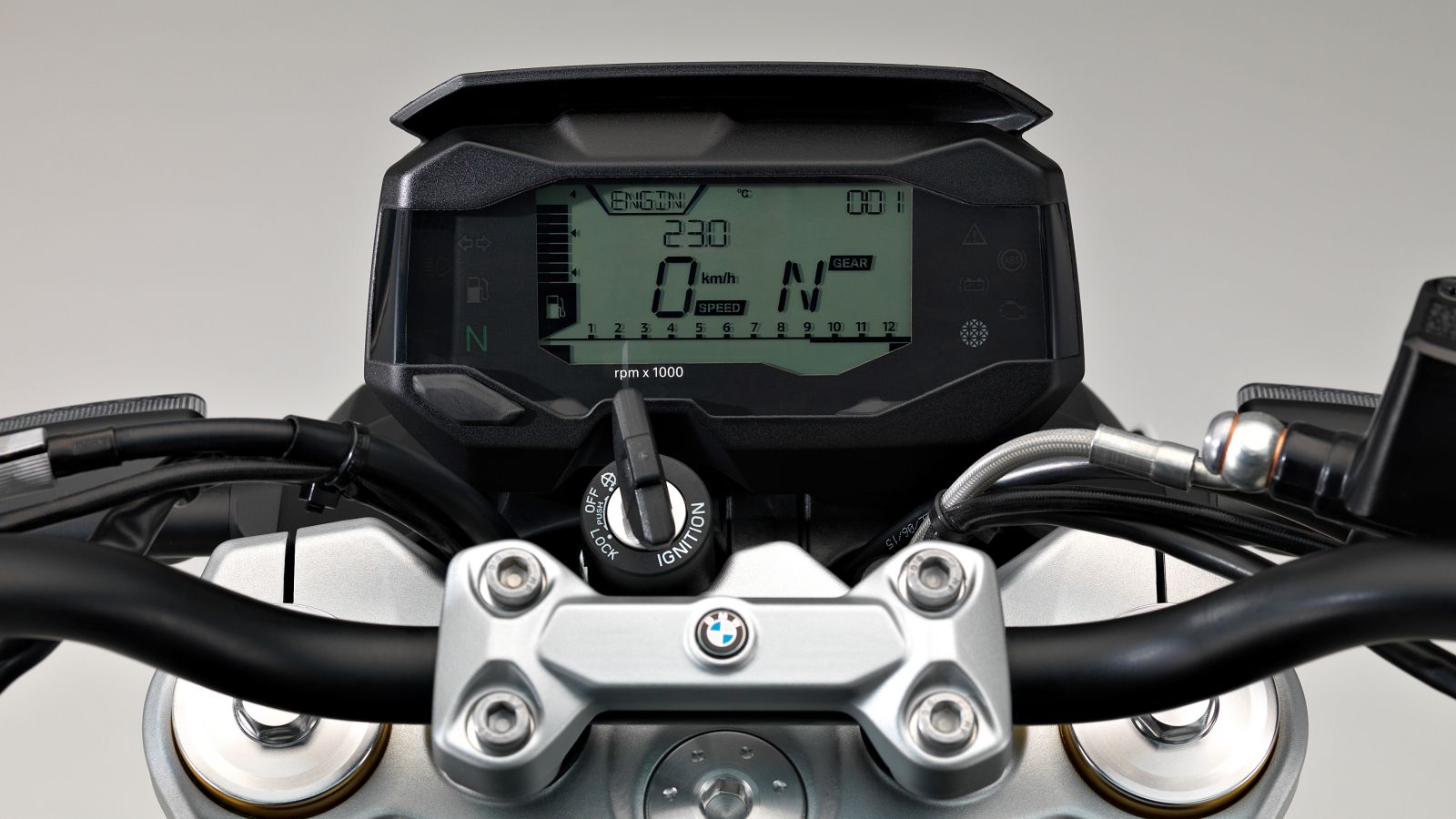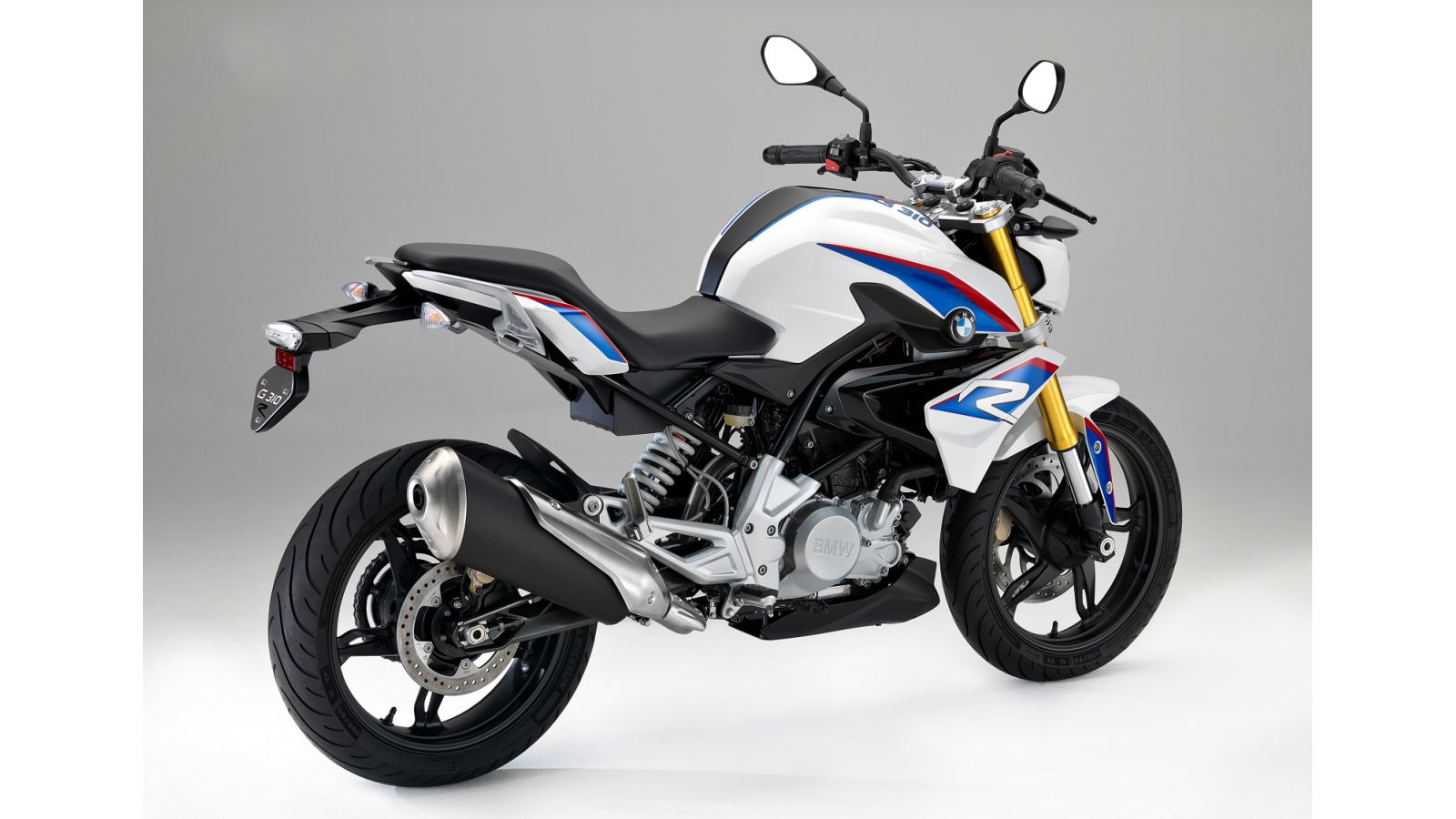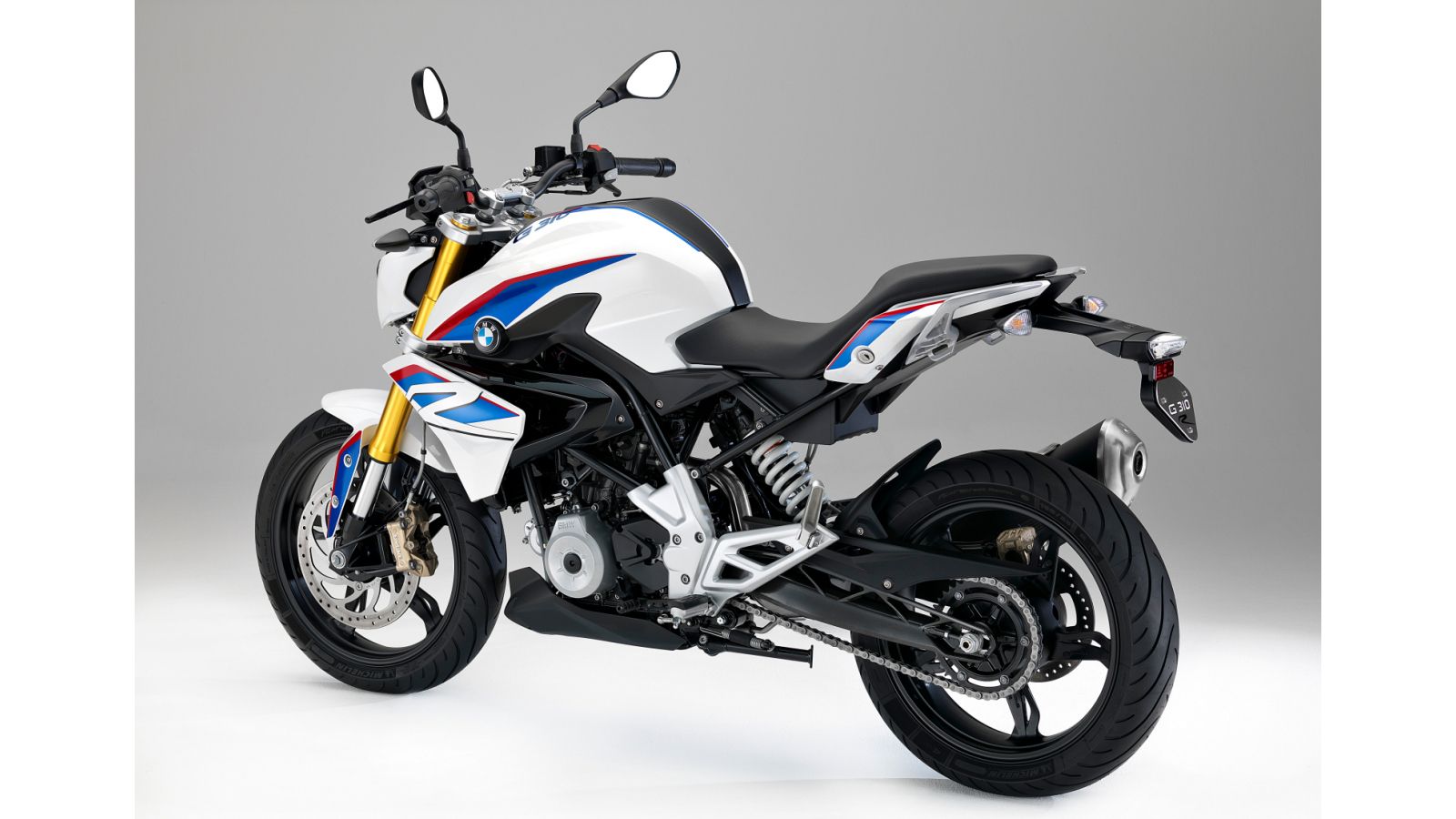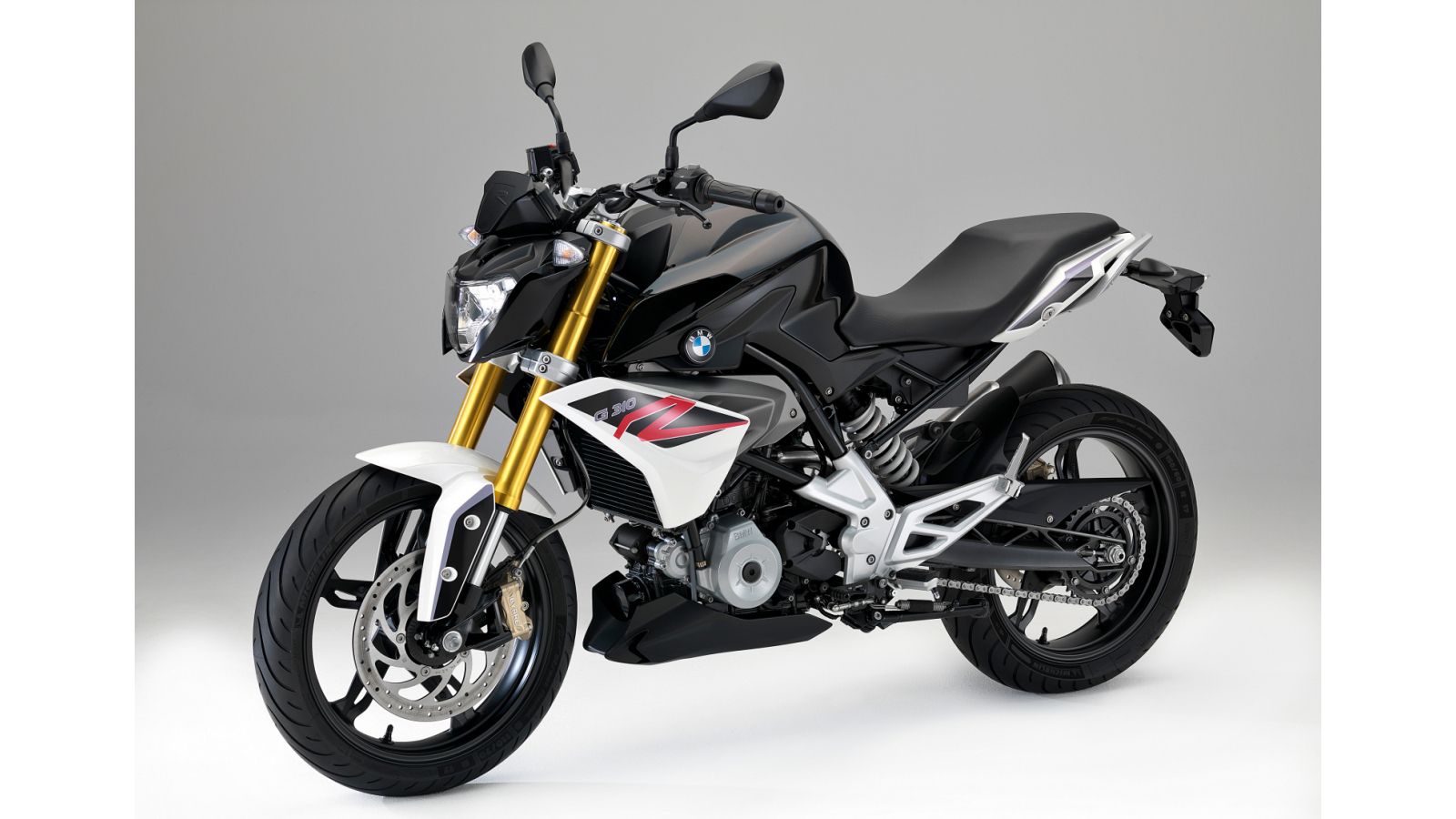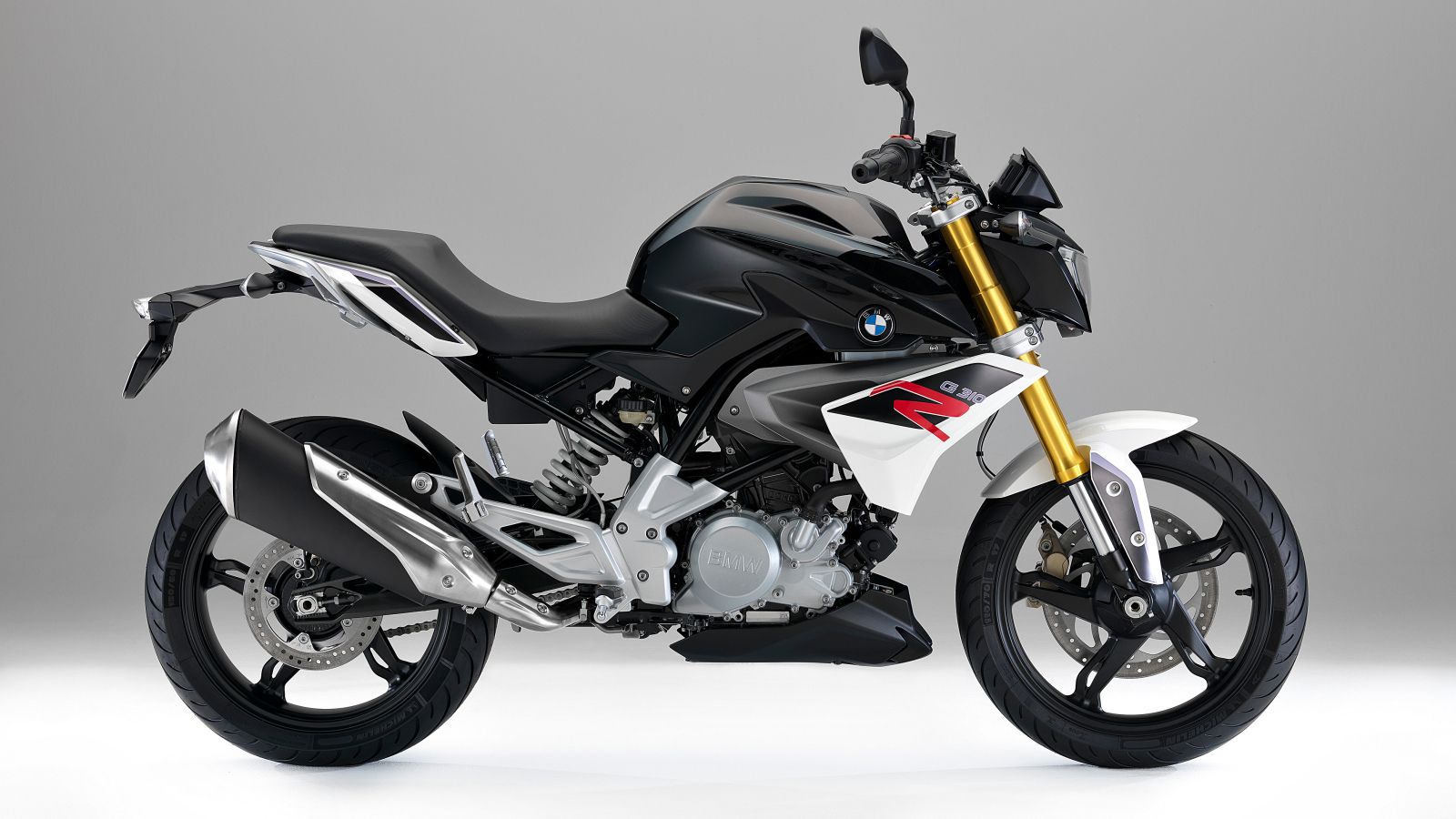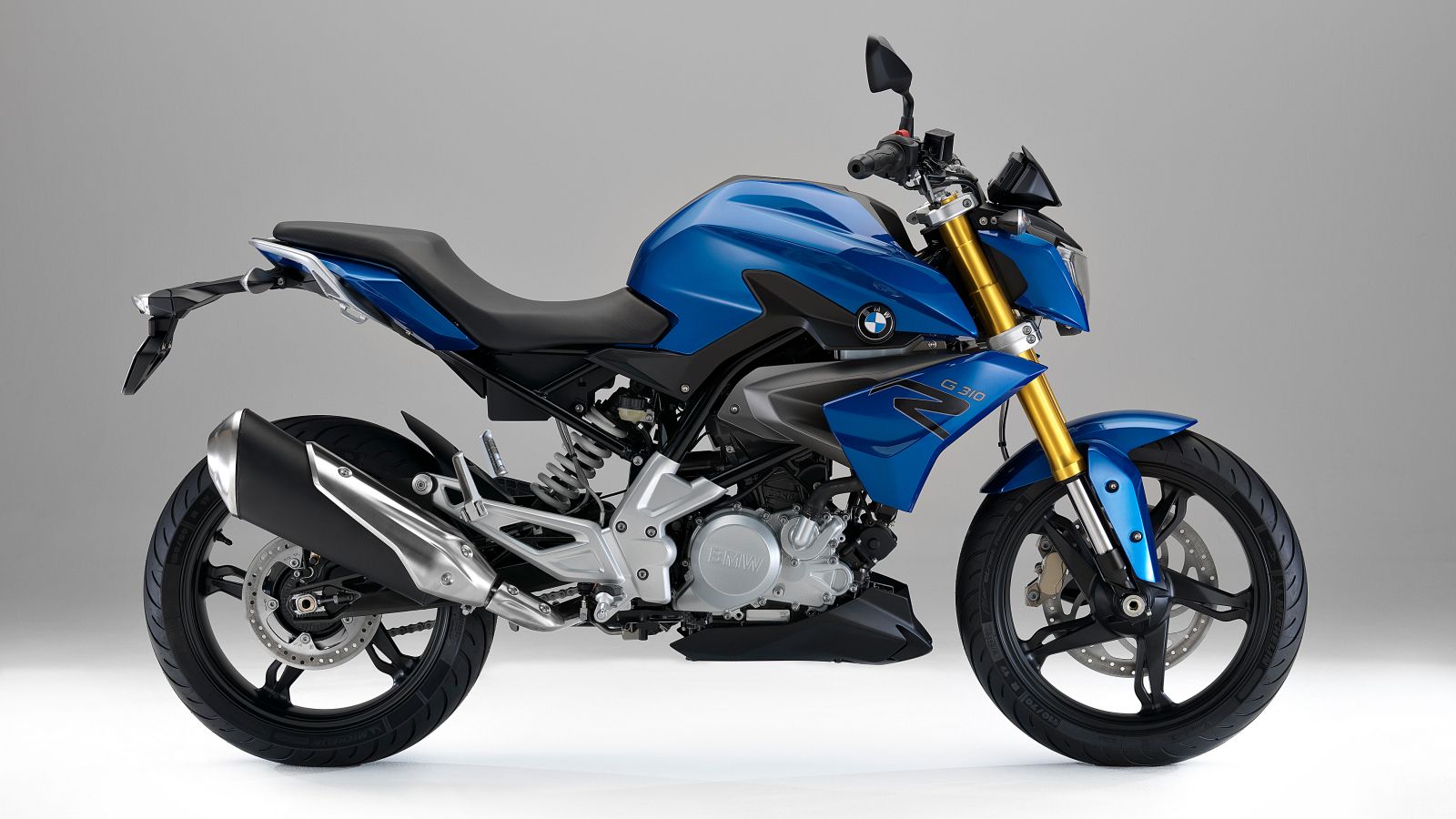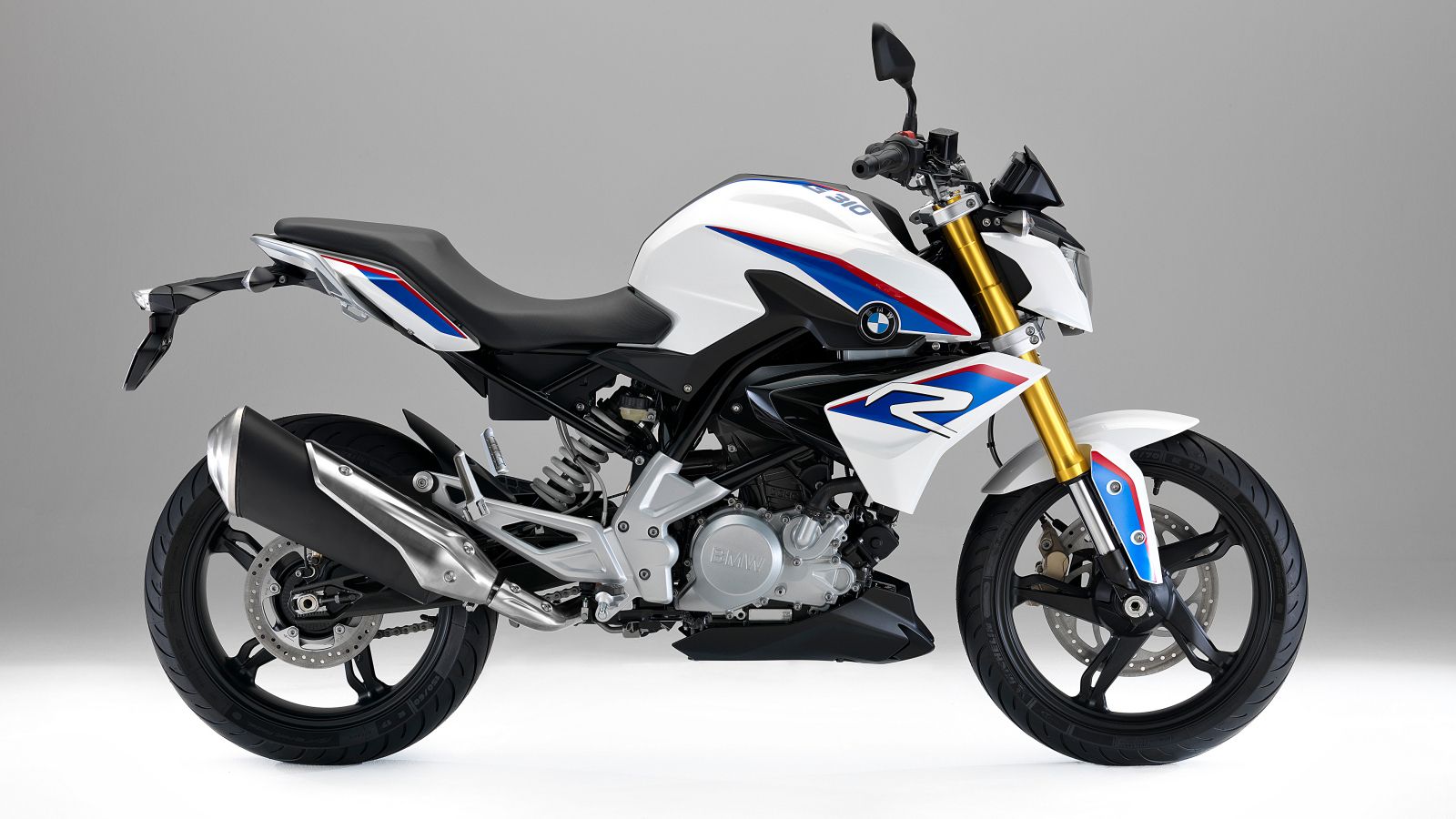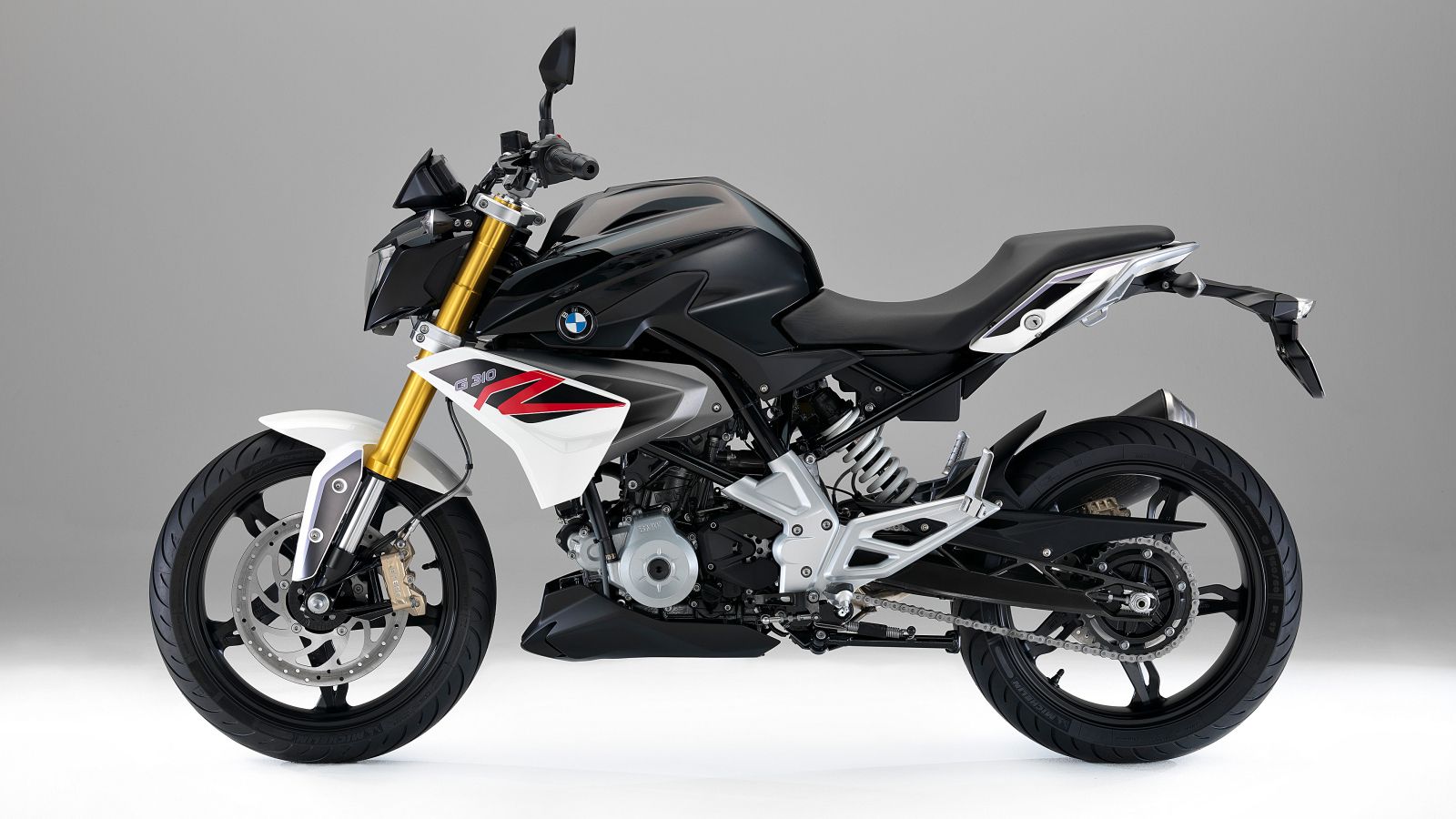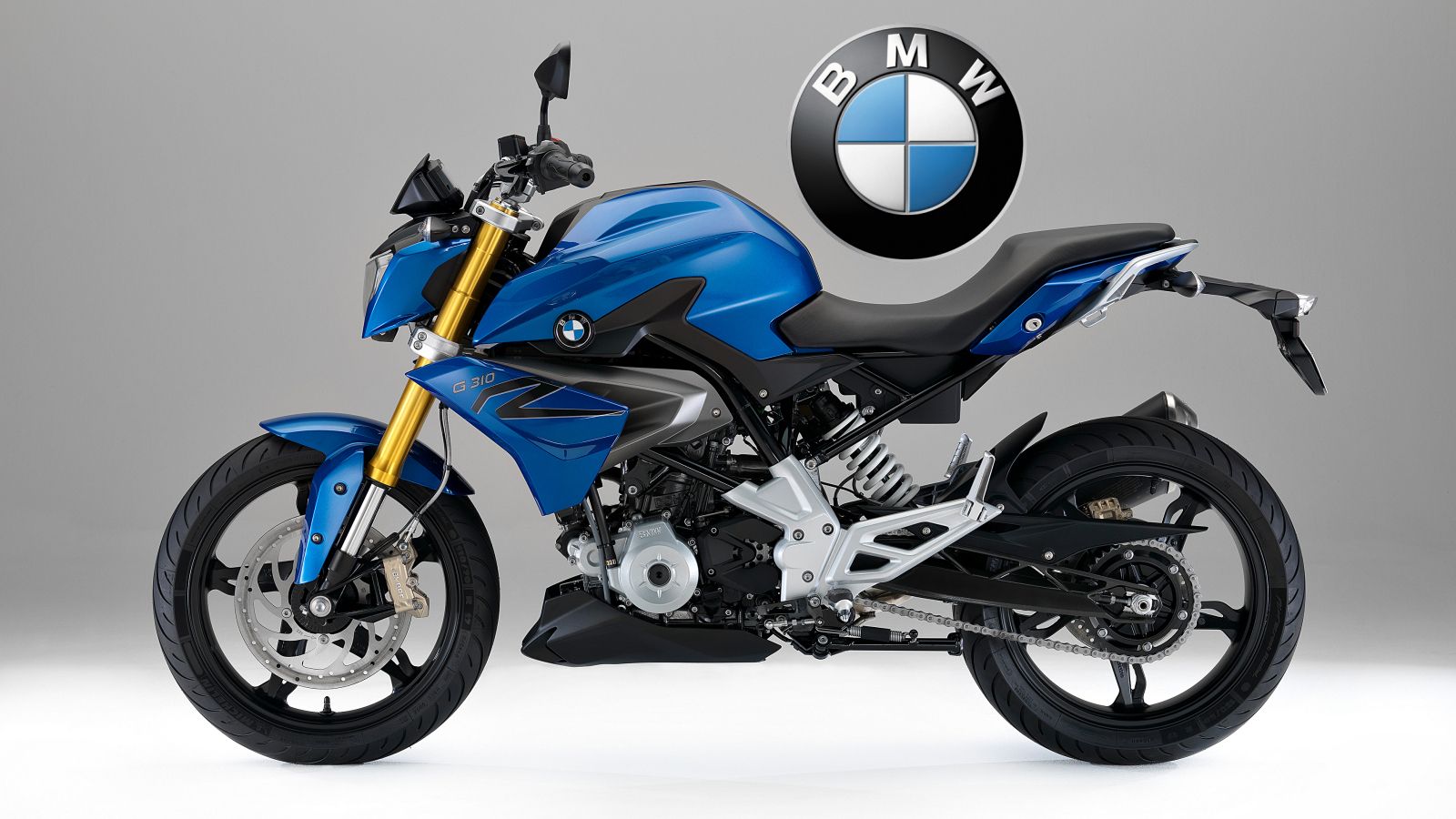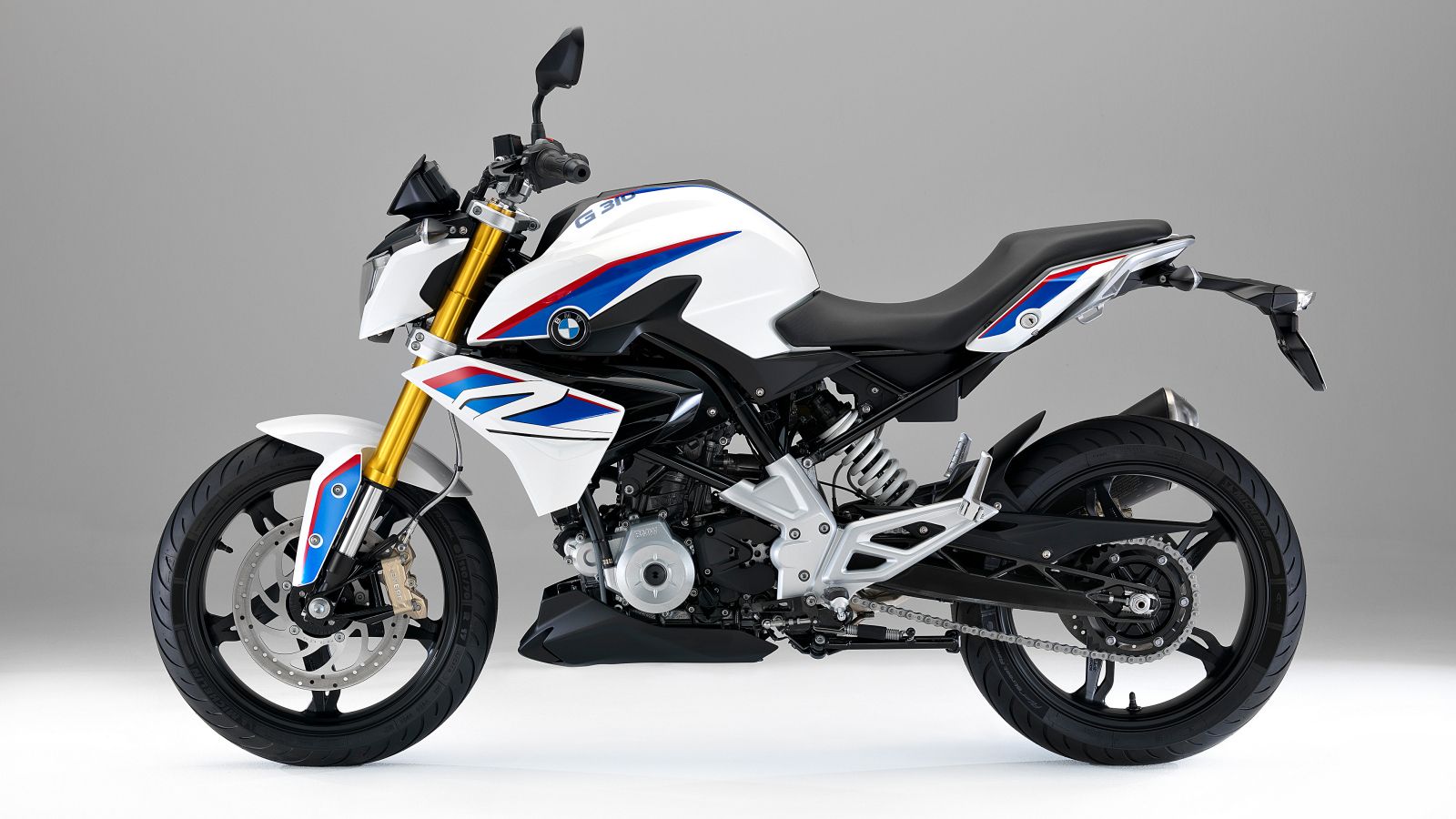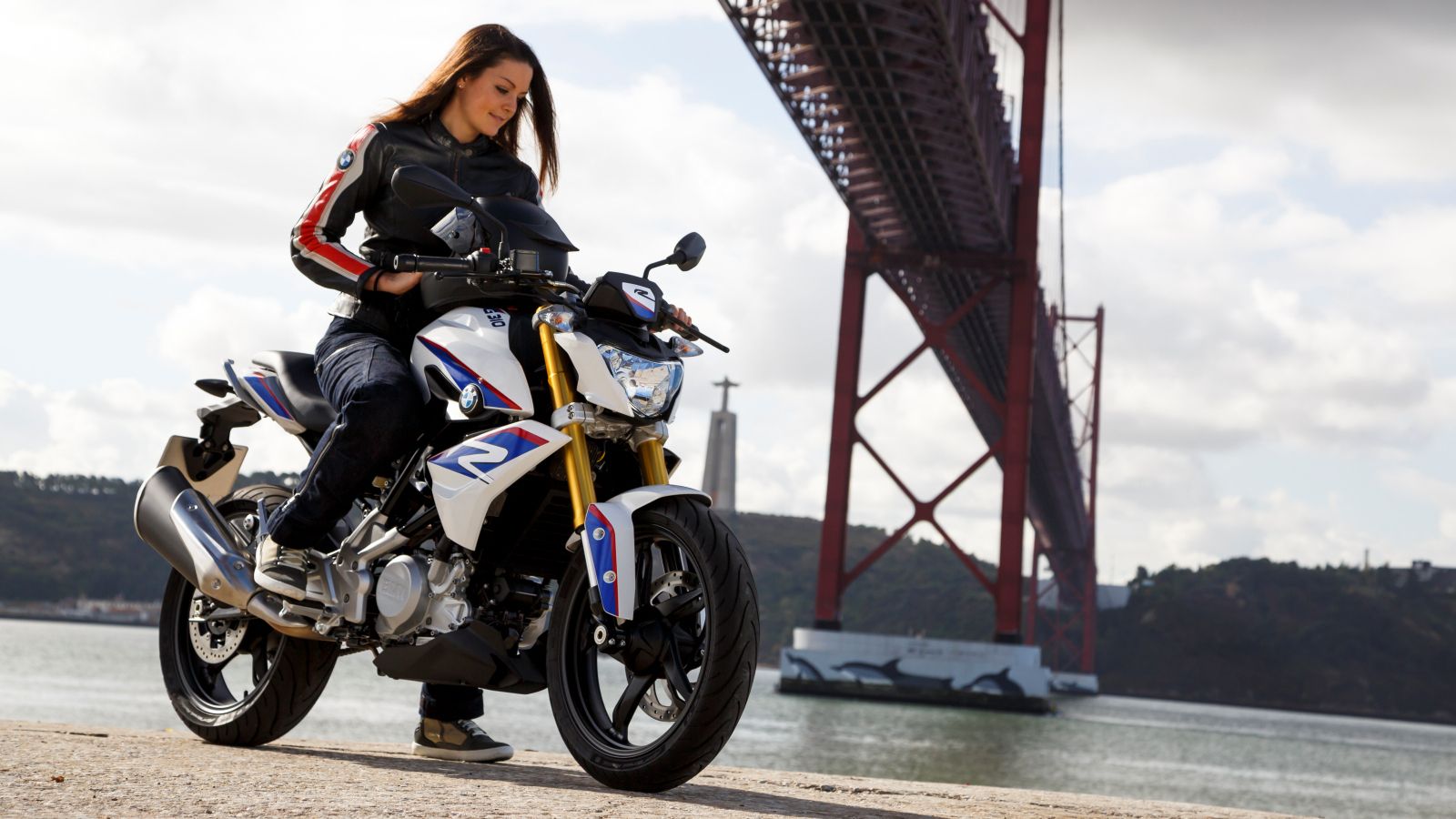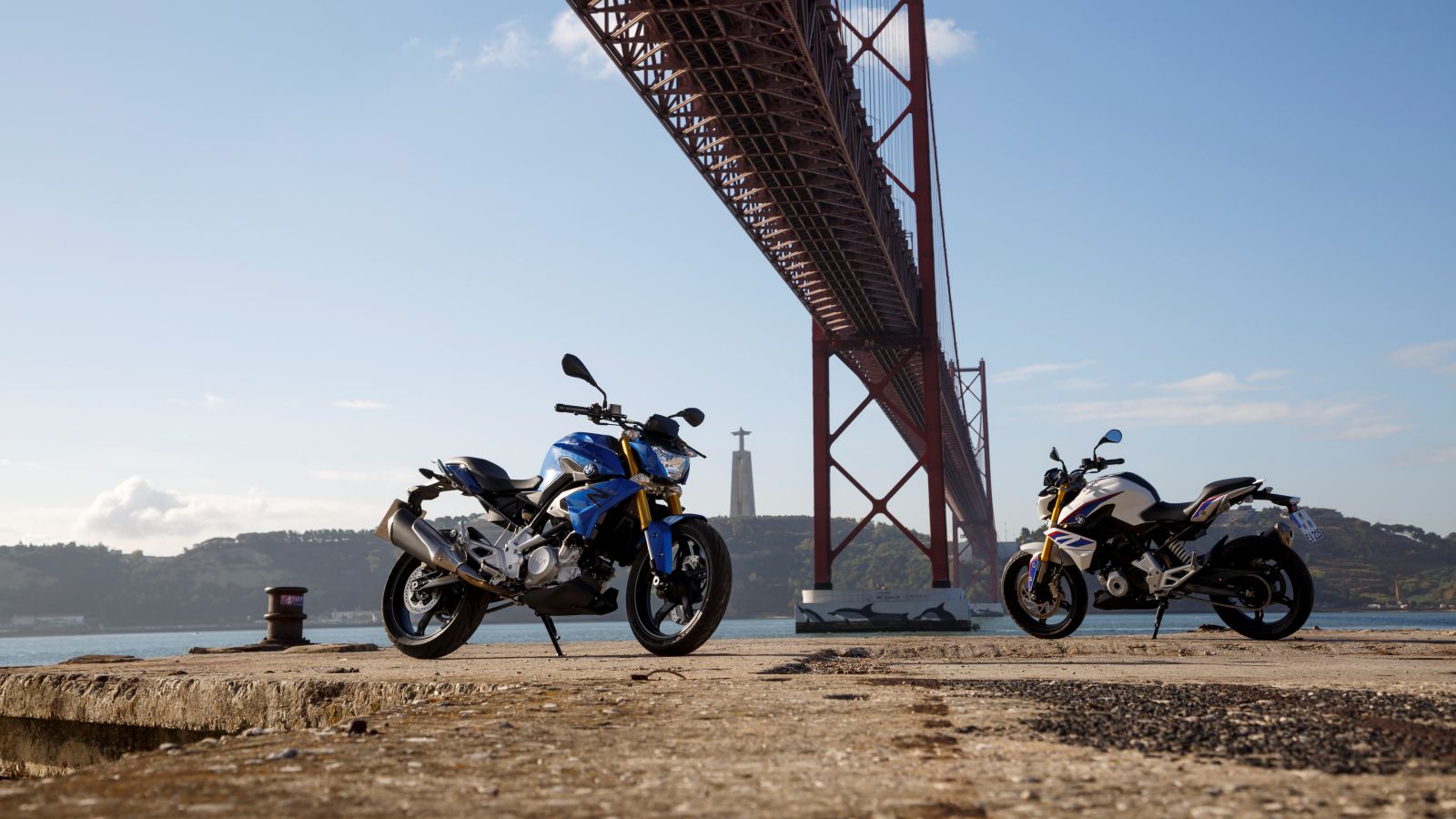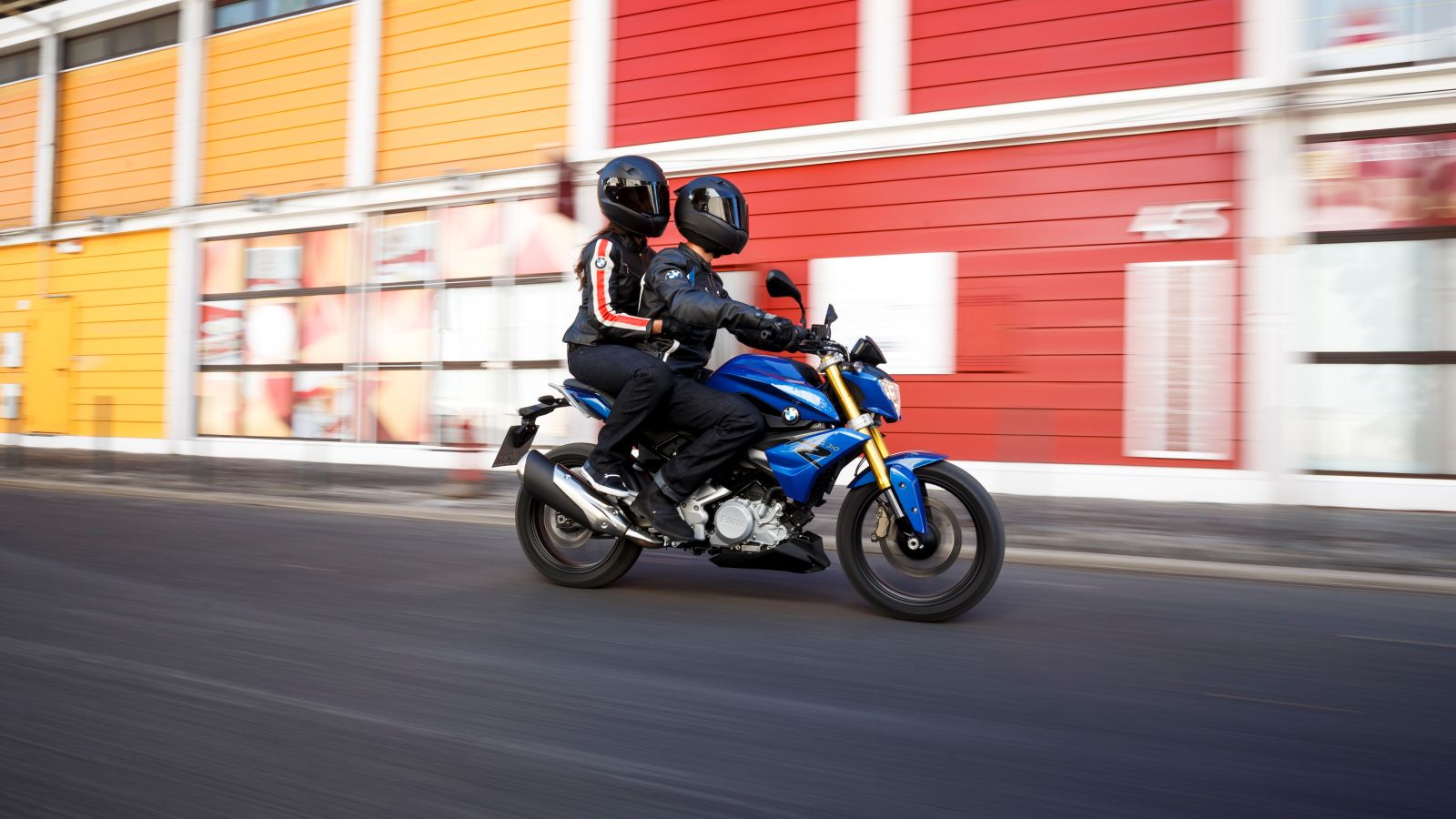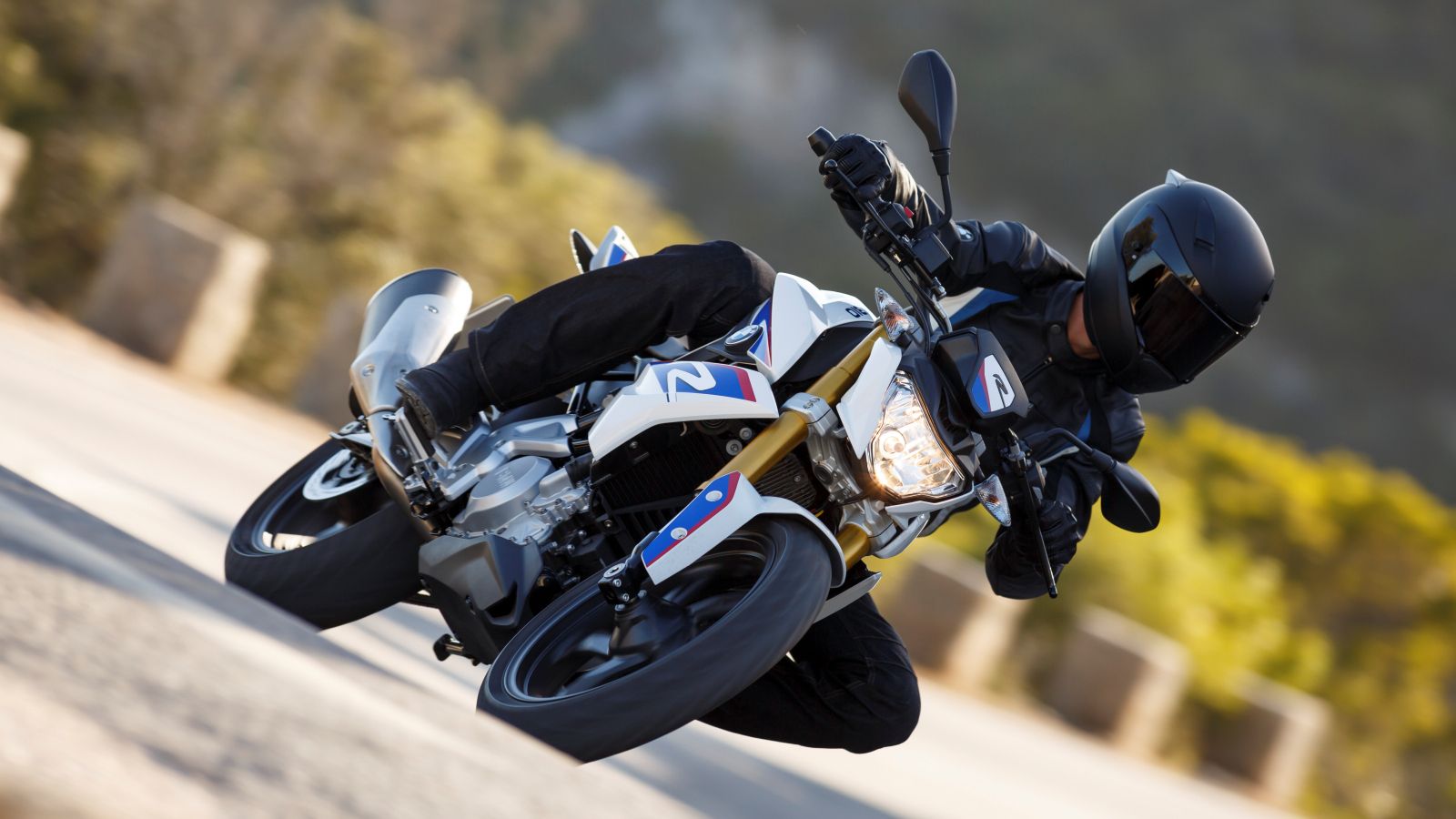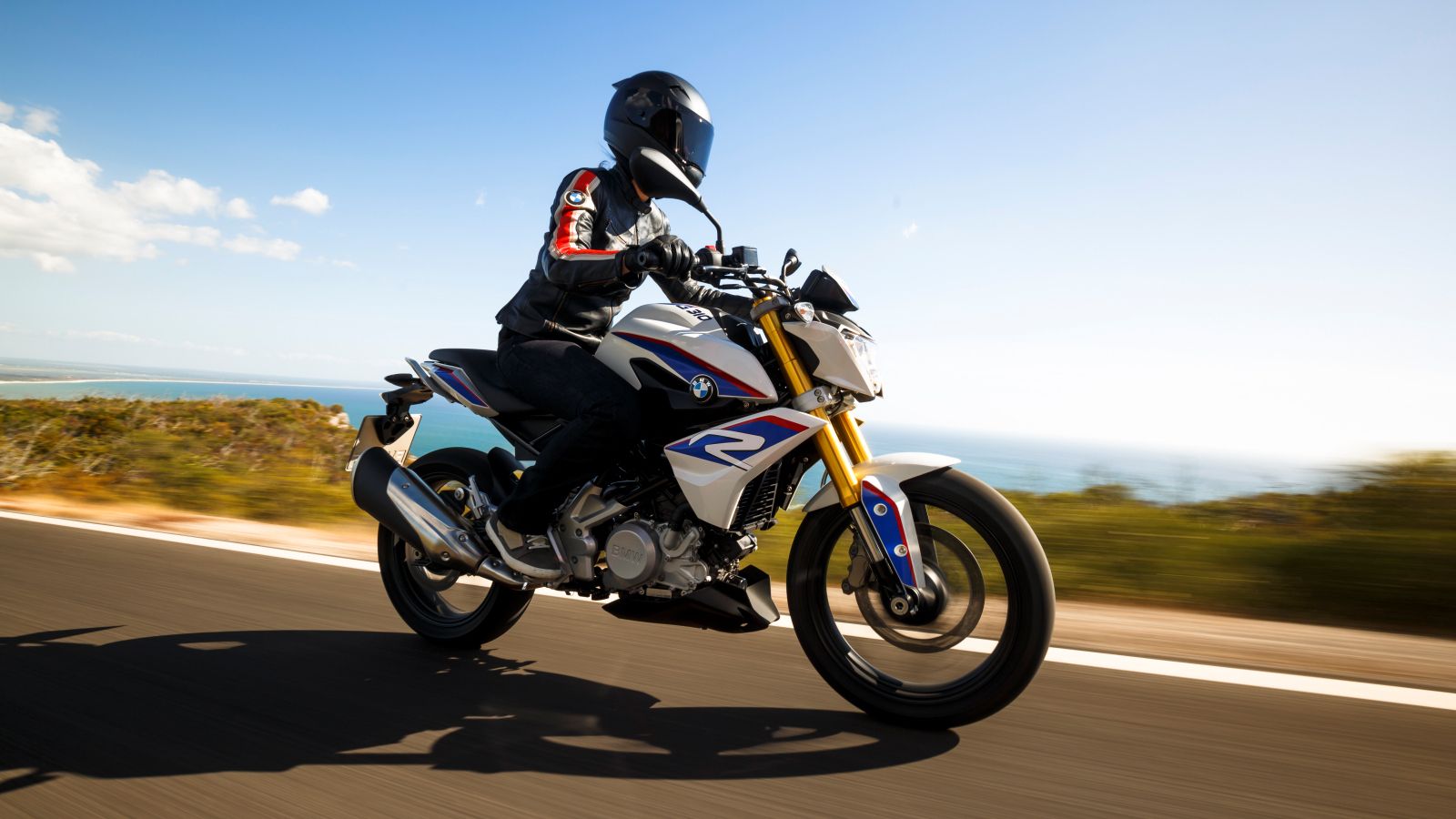In styling, the G 310 R -- BMW->ke1398's first roadster->ke294 under 500 cc -- is a smaller cc version of the S 1000 R, but it is anything but small when it comes to performance. A lot of times, I'll call anything under 400 cc an entry level or beginner's bike. It might be a handful for folks new to two wheels, but as a crotch-rocket trainer or a fun bike in the stable of experienced riders, it delivers nimble handling and a fun ride.
Yes, it's a roadster, but with it's own panache. The low front and high tail definitely gives you that “cat about to pounce” stance. Deep cuts in the tank tell you before you get on that this bike is meant to be ridden hard and fast through the curves.
Continue reading for my review of the BMW G 310 R.
2016 BMW G 310 R
- Make: Array
- Model: 2016 BMW G 310 R
- [do not use] Vehicle Model: Array
Design
Despite the short wheelbase, the G 310 R has a surprisingly long swingarm, which gives you better tracking at speed and helps keep the nose down when you grab a fist full of throttle. The forward biased center of gravity allows for quick reversals and overall, it is very agile.
The aggressive styling might lend itself to an aggressive riding position, but that isn't the case here. Seating is upright and comfortable, though short riders may find the “low” seat height of almost 31 inches a little tall for both feet flat on the ground. As always with a BMW, check out the seat height options to bring it down or push it up as your inseam demands.
Chassis
Beemer had a number of objectives in mind when it laid out the frame for the G 310 R. The designers wanted something that was going to be lightweight and nimble with proportions that would lend it a one-size-fits-all quality for a broad range of body types – sort of an “everyperson's” bike, if you will. A bridge-type frame and bolt-on rear subframe come made up entirely of tubular-steel members with a solid, die-cast, 25.6-inch aluminum swingarm to finish out the bones.
Steering-head angle according to the factory is 64.9-degrees, but that is measured from the horizontal plane, not the vertical plane like U.S. buyers are accustomed to seeing. We would call this a 25.1-degree rake that gives us 4 inches of trail and a 54-inch wheelbase with the handling Beemer was looking for.
A set of 41 mm, inverted forks float the front on 5.2 inches of travel while a monoshock floats the rear on 5.5 inches of travel and provides the only adjustment in the entire system with a spring preload adjuster. But worry not, the factory assures us the suspension comes tuned for a variety of riding surfaces and conditions, and coming from BMW I reckon that's probably good enough.
Cast-alloy wheels keep unsprung weight down at the axles, and the 17-inch tires are fairly narrow and nimble at 100/70 up front and 150/60 in the back. A pair of 300 mm brake discs work with four-pot calipers to slow the front wheel, and a single-piston rear caliper pinches the 240 mm disc in back. Beemer adds on its in-house, two-channel ABS, and uses braided-steel brake line covers to combat pressure variations caused by rubber flex and rebound, so all the braking force goes directly to the calipers.
Drivetrain
Small displacement doesn't necessarily mean simple, and the G 310 R mill is anything but. The 313 cc, water-jacketed thumper runs a four-valve head with a pair of overhead cams and Diamond-Like Carbon (DLC) coated rocker arms tending to the timing, a technology borrowed from Beemer's S 1000 RR->ke3153 superbike. A BMS-E2 fuel injection system breathes through a 42 mm throttle body, and the rearward-leaning cylinder leaves room for a generous intake silencer tucked up behind the front fairing and under the fuel tank.
The swept area of the 80 mm bore and 62.1 mm stroke comes treated with a Nikasil coating for low-friction operation, and special baffles within the oil sump to ensure continuous oil delivery from the pump, even when in extreme lean angles. Waste gasses pass through a catalyst within the muffler, and are burned off with the assistance of a secondary air system to help the mill meet EU4 emissions requirements.
Normally, one would expect some pretty nasty vibration from a single-cylinder engine, but Beemer tamed this somewhat with a balance shaft that offsets some of the reciprocating mass in the engine. It's far from perfectly smooth, but it's better than nothing.
The factory means for this bike to serve the world market, and so it kept the compression down at a reasonable level at 10.6-to-1 so you don't have to search far and wide for a source of expensive, pump-delivered champagne. In the end, we have a mill that grinds out 21 pound-feet of torque at 7,500 rpm and 34 horsepower at 9,500 rpm with an integral, six-speed transmission that gives us 90 mph at 71 mpg. Solid numbers for a little streetbike meant to “compete” with everyday traffic as part of a commute, or carve up backroads on the weekends. (Or, some combination thereof.)
Pricing
As of this writing, I don't have MSRP on the BMW G 310 R, but friends in the U.K. tell me that there, it is priced a few hundred less than the KTM 390 Duke. That's promising because the Duke->ke3018 is affordable. And speaking of the 390 Duke, let's see how they compare.
Competitors
Whenever possible, I like to look for a competitor from the same general neck-of-the-woods as the object of our review, and I didn't have far to look this time. KTM->ke1954 makes the 390 Duke, a comparable ride with a comparable plant, so let's get this Bavarian versus Austrian showdown started, shall we?
The “naked->ke5317” Duke comes off looking clean and minimal, but the Beemer “roadster” is nearly as Spartan with only an additional cheek fairing to clutter up the look, and both look like serious business with nothing of fluff added on. Steel Trellis frames peek out on both machines, but while Beemer camouflages it with black paint, KTM paints it orange so it adds to the overall panache.
Suspension is comparable, though the Duke runs 43 mm WP forks, just a bit beefier than the 41 mm BMW tubes. Brakes are likewise close, and while the G 310 R sports Beemer's in-house ABS, KTM uses a Bosch 9MB, two-channel ABS as the brake safety net.
KTM gains an edge in cube-age with a total displacement of 373.2 cc over the 313 cc Beemer, and this shows up on the dyno. While the G 310 R is certainly respectable with its 34 ponies, KTM takes that handful of cubes and wrings a total of 42.9 horsepower out of it. Both bikes run six-speed trannies, but KTM gets a little race-tastic with an anti-hopping slipper clutch which is a nice touch even if you never plan to get any closer to a track than the parking lot. You can count on both of these thumpers to vibrate a bit at idle, and smooth out to a tolerable buzz at speed – they're thumpers, nothing for it.
He Said
My husband and fellow motorcycle writer, TJ Hinton, says, “Nice little commuter->ke5324 or trainer bike. The single-cylinder vibration may sound harsh, but it's no worse than an old, hard mounted motor Sportster->ke1818, I assure you. Salient point is; it's tolerable, and the way this thing is supposed to handle you probably will be having too much fun to notice.”
She Said
“I'm going to give it a little more credit than my husband. Yeah, a commuter -- with a fun commute, of course -- and a crotch-rocket trainer, but it's also a bike for experienced riders, too. It has the looks and the performance, so I'm not counting this one short. Lightweight and compact, it'll appeal to riders with different agendas, so you really can't fit this in a niche.”
Specifications
|
Engine: |
|
|
Type: |
Water-cooled, single-cylinder 4-stroke engine, four valves, two overhead camshafts, wet sump lubrication |
|
Bore x stroke: |
80 mm x 62 mm |
|
Capacity: |
313 cc |
|
Rated output: |
34 hp (25 kW) at 9,500 rpm |
|
Max. torque: |
21 lb-ft (28 Nm) at 7,500 rpm |
|
Compression ratio: |
10.6 : 1 |
|
Mixture control / engine management: |
Electronic fuel injection, BMS-E2 |
|
Emission control: |
Closed-loop 3-way catalytic converter, emission standard EU-4 |
|
Performance / fuel consumption: |
|
|
Maximum speed: |
90 mph |
|
Fuel consumption per 100 km at constant 90 km/h: |
71 mpg (WMTC) |
|
Fuel type: |
Premium Unleaded |
|
Electrical system: |
|
|
Alternator: |
Alternator 330 W |
|
Battery: |
12 V / 8 Ah, maintenance free |
|
Power transmission: |
|
|
Clutch: |
Multiple-disc clutch in oil bath, mechanically operated |
|
Gearbox: |
Constant-mesh 6-speed transmision integrated in the motor housing |
|
Drive: |
Endless O-ring chain with shock damping in rear wheel hub |
|
Chassis / brakes: |
|
|
Frame: |
Tubular steel bridge-type frame with bolt-on rear frame |
|
Front wheel location / suspension: |
Upside down telescopic fork, Ø 41 mm |
|
Rear wheel location / suspension: |
Solid die-cast aluminum swingarm, directly hinged monoshock, adjustable preload |
|
Suspension travel front / rear: |
5.5" / 5.2" (140 mm / 131 mm) |
|
Wheelbase: |
54.0" (1,374 mm) |
|
Castor: |
4" (102.3 mm) |
|
Steering head angle: |
64.9° |
|
Wheels: |
Cast aluminum wheels |
|
Rim, front: |
3.0 x 17" |
|
Rim, rear: |
4.0 x 17" |
|
Tyres, front: |
110/70 R 17 |
|
Tyres, rear: |
150/60 R 17 |
|
Brake, front: |
Single disc, diameter 300 mm, 4-piston fixed caliper, radially bolted |
|
Brake, rear: |
Single disc, diameter 240 mm, single-piston floating caliper |
|
ABS: |
BMW Motorrad ABS |
|
Dimensions / weights: |
|
|
Length: |
78.3" (1,988 mm) |
|
Width (incl. mirrors): |
35.3" (896 mm) |
|
Height (excl. mirrors): |
48.3" (1,227 mm) |
|
Seat height, unladen weight: |
30.9" (785 mm) |
|
Inner leg curve, unladen weight: |
70.3" (1,785 mm) |
|
Unladen weight, road ready, fully fuelled 1): |
349 lbs (158.5 kg) |
|
Permitted total weight: |
760 lbs (345 kg) |
|
Payload (with standard equipment): |
411 lbs (186.5 kg) |
|
Usable tank volume: |
2.9 gal (11 l) |
|
Reserve: |
approx. 0.3 gal (1 L) |


